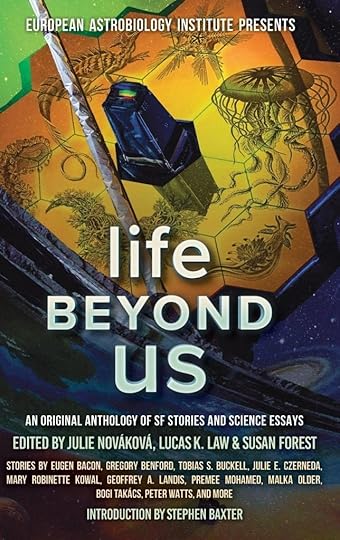Rachel S. Cordasco's Blog, page 8
January 23, 2024
SFT Looking for a Publisher: The Last Fire
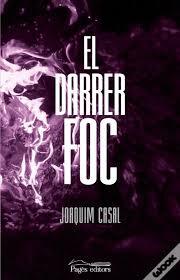
translated from the Catalan
Do we know everything about fire? After many years of studies and research, and the analysis of many fires, we think so. But this is not the case. There is another dimension to fire, another world, that our technological society does not know about. The Last Fire, which received an honourable mention in the Miquel Barceló UPC Science Fiction Award 2022, describes an enigmatic phenomenon that can appear in the flames, which the main characters investigate. Various disturbing events, first in Barcelona during research on fire protection and then in an ancient village right in the heart of the Karkas mountains in Iran, will confront them at the limits of fire and life.
Joaquim Casal (1948) is a professor emeritus at the Universitat Politècnica de Catalunya. He has published many papers and two books in the field of technology risk analysis: fires, explosions and toxic leaks. He has been a visiting professor at universities in various countries, including the Sharif University of Technology (Teheran). In the area of fiction and science fiction, he has published several stories, such as Entropia minvant (Ictineu Award 2012) and those collected in the volume L’esperit de fum i altres relats (2012). He is also the author of the novels Una recerca en dos temps, which received special mention in the UPC Science Fiction Award 2010, and Tilepadeion: I know what’s in your mind, which won the Manuel de Pedrolo Narrative Award in 2014.
January 10, 2024
Review: Stories by Cristina Jurado
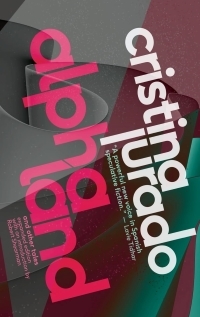
translated by Sue Burke, Ines Galiano, Monica Louzon, Steve Redwood, and James Womack
first English edition: Nevsky Books, 2018
new English edition: Calque Press, 2023
grab a copy here or through your local independent bookstore or library
I first read Alphaland a few years ago and loved the stories’ creeping horror and dark mystery [see my review on Skiffy and Fanty here]. How excited was I, then, when I learned that the collection had been reissued with an introduction and more stories?! So, without further ado, here are my thoughts on “Embracing the Movement,” “Lamia,” and “Dump.”
“Embracing the Movement” (tr. Sue Burke): The narrative voice of this story is the story. Told from the point of view of a powerful, dynamic, swarm-based, and very self-satisfied alien intelligence, “Embracing the Movement” is about contact with a single human astronaut traveling through space. Here, the alien talks to/at the human, questioning how it could have the temerity to venture out into space with only a crummy ship and flimsy suit. The alien goes on at length about how its swarm functions, all of the many civilizations it has seen (and destroyed), and how utterly baffled it is by the human’s lack of response to its “unfurling” (it’s attempt to communicate). Proud, sanctimonious, and frustrated, this alien voice ultimately decides that the human must be dealt with…
“Lamia” (tr. Monica Louzon): Based on the Greek myth about a female or hermaphroditic demon who devoured children and seduced men, this story provokes horror and disgust, even as it is told in a smooth, almost caressing narrative voice. Lamia explains how she was transformed from a shepherd girl into a terrifying creature who preys on mothers and babies in her attempt to find the man who did this to her. The fact that Lamia speaks directly to the reader for much of the story only adds to the sense of unease.
“Dump” (tr. Steve Redwood): Naima lives in a sea of trash, scavenging, with the other “Rats,” in order to survive. When she finds a working laptop on one of the garbage mountains, Naima brings it to one of the bosses, who in turn sends Naima with one of his assistants to a bazaar to sell it. The thing is, Naima has another intelligence living within her and taking over her consciousness whenever it feels it is necessary. This unknown consciousness may be human or alien, but the question is why did it choose Naima to inhabit? Also, to what end?
January 2, 2024
Out This Month: January
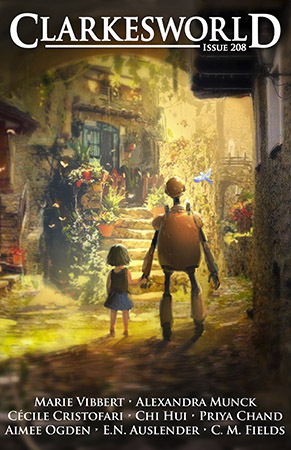 “Stars Don’t Dream” by Chi Hui, translated from the Chinese by John Chu (Clarkesworld, January 1)
“Stars Don’t Dream” by Chi Hui, translated from the Chinese by John Chu (Clarkesworld, January 1)
Wafers by Ha Seong-nan, translated from the Korean by Janet Hong (Open Letter, January 16)
This 2006 collection of short stories is in line with the unsettling, engrossing style of Ha’s other two collections that have been translated into English, the critical and commercial successes Flowers of Mold and Bluebeard’s First Wife. A best-seller in Korea, Ha Seong-nan is one of the stars of contemporary short fiction, writing edgy, socially conscious stories that bring to mind the novels of Han Kang and the film Parasite.

Your Utopia by Bora Chung, translated from the Korean by Anton Hur (Algonquin Books, January 30)
In “The Center for Immortality Research,” a low-level employee runs herself ragged planning a fancy gala for donors, only to be blamed for a crime she witnessed during the event, under the noses of the mysterious celebrity benefactors hoping to live forever. But she can’t be fired—no one can. In “One More Kiss, Dear,” a tender, one-sided love blooms in the AI-elevator of an apartment complex; as in, the elevator develops a profound affection for one of the residents. In “Seeds,” we see the final frontier of capitalism’s destruction of the planet and the GMO companies who rule the agricultural industry, but nature has ways of creeping back to life.
January 1, 2024
2024
JANUARY
“Stars Don’t Dream” by Chi Hui, translated from the Chinese by John Chu (Clarkesworld).
“A Song for Sleep” (excerpt from Your Utopia) by Bora Chung, translated from the Korean by Anton Hur (Words Without Borders).
“House on the Edge of the Crater” by Gábor Képes, translated from the Hungarian by Anna Kállai (Samovar).
“The House of the Scolopendra” by Nicola Lombardi, translated from the Italian by J. Weintraub (Samovar). [reprint]
FEBRUARY
“The Peregrine Falcon Flies West” by Yang Wanqing, translated from the Chinese by Jay Zhang (Clarkesworld).
December 26, 2023
SFT Out In: 2023
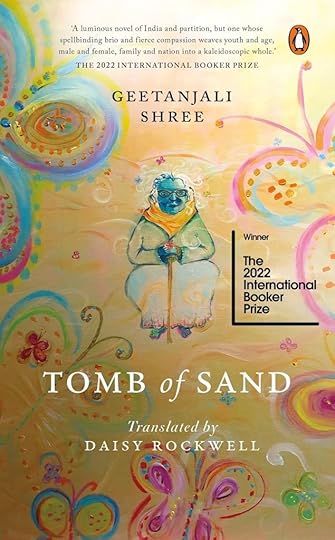
Tomb of Sand by Geetanjali Shree, translated from the Hindi by Daisy Rockwell (HarperVia, January 31)
A playful, feminist, and utterly original epic set in contemporary northern India, about a family and the inimitable octogenarian matriarch at its heart.
FEBRUARY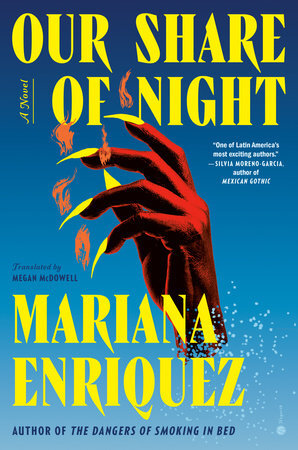
Our Share of Night by Mariana Enriquez, translated from the Spanish by Megan McDowell (Hogarth, February 7)
Moving back and forth in time, from London in the swinging 1960s to the brutal years of Argentina’s military dictatorship and its turbulent aftermath, Our Share of Night is a novel like no other: a family story, a ghost story, a story of the occult and the supernatural, a book about the complexities of love and longing with queer subplots and themes.
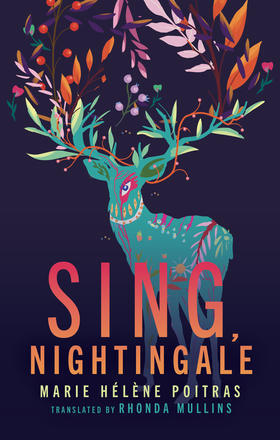
Sing, Nightingale b y Marie Hélène Poitras, translated from the French (Quebec) by Rhonda Mullins (Coach House Books, February 14)
Peter Greenaway meets Angela Carter: a Gothic tale of secrets and revenge

The Strangers by Jon Bilbao, translated from the Spanish by Katie Whittemore (Dalkey Archive, February 21)
A deliciously tense and darkly humorous novella that explores the border that separates love from routine and offers a twist on theme of “the other” and how to live with the unknown, The Strangers introduces English readers to singular talent.
MARCH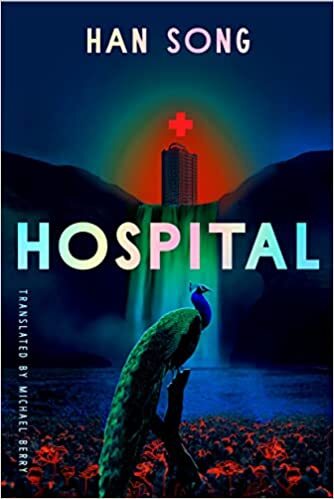
Hospital by Han Song, translated from the Chinese by Michael Berry (AmazonCrossing, March 1)
A twisted, wildly imaginative tale of one man’s mysterious illness and his journey through a dystopian hospital system.
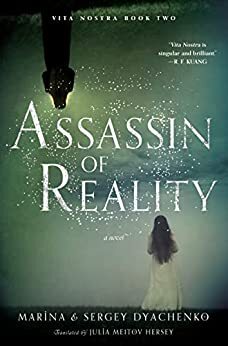
Assassin of Reality by Marina and Sergey Dyachenko, translated from the Russian by Julia Meitov Hersey (Harper Voyager, March 14)
The eagerly anticipated sequel to the highly acclaimed Vita Nostra takes readers to the next stage in Sasha Samokhina’s journey in a richly imagined world of dark academia in which grammar is magic—and not all magic is good.
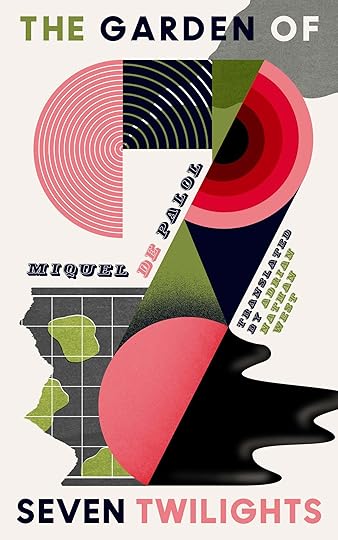
The Garden of Seven Twilights by Miquel de Palol, t ranslated from the Catalan by Adrian Nathan West (Dalkey Archive, March 21)
During an atomic alarm in Barcelona in the year 2025, the thirty-year old hero takes refuge in a luxurious mansion in the mountains where he is put up, along with other guests, awaiting the outcome of the conflict. For the following seven days the residents of the mansion spend their spare time reading and taking walks , and, above all, telling stories to each other. The narrators (most of whom belong to the generation thirty years older than the hero’s) are eight in number, and the stories they tell can be taken as autonomous ones, although, as the novel advances, it may soon be that when juxtaposed, they do indeed weave a web of intrigue about a family of bankers—a web that gradually involves some of the guests in the mansion.
 Ten Planets by Yuri Herrera, translated from the Spanish by Lisa Dillman (Gray Wolf Press, March 21)
Ten Planets by Yuri Herrera, translated from the Spanish by Lisa Dillman (Gray Wolf Press, March 21)In Ten Planets, Herrera’s consistent themes—the mutability of borders, the wounds and legacy of colonial violence, and a deep love of storytelling in all its forms—are explored with evident brilliance and delight.
APRIL
No Edges: Swahili Stories by various authors and translators (Two Lines Press, April 11)
Swahili is the future. The first collection of Swahili fiction in English translation, No Edges introduces eight East African writers from Tanzania and Kenya as they share tales of sorcerers, Nairobi junkyards, cross-country bus rides, and spaceships that blast prisoners into eternity. Here we’re encouraged to explore the chaos of life on a crowded Earth, as well as the otherworldly realms lying just beyond our reach. Through language bursting with rhythm and vivid African futurist visions, these writers summon the boundless future into being.

Hit Parade of Tears by Izumi Suzuki, translated from the Japanese by Sam Bett, David Boyd, Daniel Joseph and Helen O’Horan (Verso Books, April 11)
Izumi Suzuki had ideas about doing things differently, ideas that paid little attention to the laws of physics, or the laws of the land. In this new collection, her skewed imagination distorts and enhances some of the classic concepts of science fiction and fantasy.
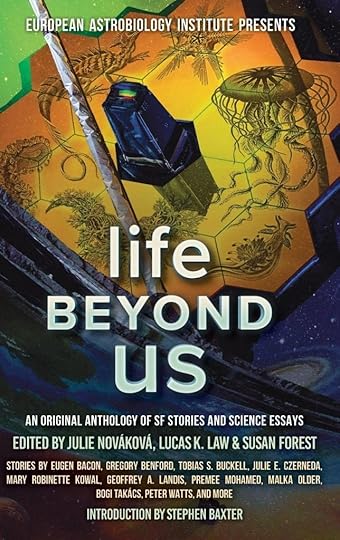
Life Beyond Us: An Original Anthology of SF Stories and Science Essays, edited by Julie Nováková, Lucas K. Law, and Susan Forest (Laksa Media Group)
Dive in as the European Astrobiology Institute presents fifty-four original SF stories and science essays on life, from microbial to macro, from automatic to sagacious. Each speculative story is followed by a professional essay illuminating the scientific underpinnings of the story and providing a new window into the cutting-edge knowledge about exploration for life in the universe.
MAY
The Roamers by Francesco Verso, translated from the Italian by ? (Flame Tree Press, May 9)
The pulldogs, a group of people at the twilight of Western civilisation, undergo an anthropological transformation caused by the dissemination of nanites (nanorobots capable of assembling molecules to create matter). This technology changes the way they eat and gives rise to a culture which, while reminiscent of an ancient nomadic society, is creative and new. Liberation from the imperative of food, combined with the ability to 3D print objects and use cloud computing, makes it possible for the pulldogs to make a choice that seems impossible and anachronistic – a new life, but is it really an Arcadia?

The Stronghold by Dino Buzzati, translated from the Italian by Lawrence Venuti (May 23)
Buzzati is one of the great Italian writers of the twentieth century, renowned for his fantastical imagination and for a touch that is as lyrical as it is light. The Stronghold, previously translated as The Tartar Steppe, is his most celebrated work, a book that has been read as a veiled attack on Mussolini’s fascist militarism, a prophetic allegory of the Cold War, and an existentialist fable.
JUNE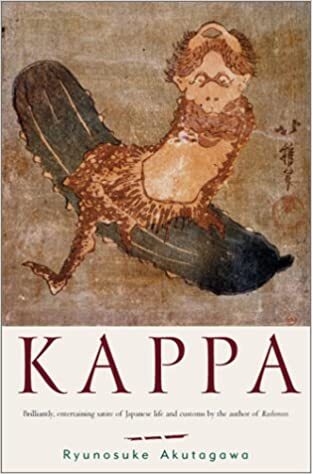
Kappa by Ryunosuke Akutagawa, translated from the Japanese by Lisa Hofmann-Kuroda and Allison Markin Powell (New Directions, June 6)
The Kappa is a creature from Japanese folklore known for dragging unwary toddlers to their deaths in rivers: a scaly, child-sized creature, looking something like a frog, but with a sharp, pointed beak and an oval-shaped saucer on top of its head, which hardens with age. Akutagawa’s Kappa is narrated by Patient No. 23, a madman in a lunatic asylum: he recounts how, while out hiking in Kamikochi, he spots a Kappa. He decides to chase it and, like Alice pursuing the White Rabbit, he tumbles down a hole, out of the human world and into the realm of the Kappas. There he is well looked after, in fact almost made a pet of: as a human, he is a novelty. He makes friends and spends his time learning about their world, exploring the seemingly ridiculous ways of the Kappa, but noting many—not always flattering—parallels to Japanese mores regarding morality, legal justice, economics, and sex. Alas, when the patient eventually returns to the human world, he becomes disgusted by humanity and, like Gulliver missing the Houyhnhnms, he begins to pine for his old friends the Kappas, rather as if he has been forced to take leave of Toad of Toad Hall…
The White City Tale by Jeong-Hwa Choi, translated from the Korean by Janet Hong (Restless Books, June 6)
Award-winning South Korean author Choi Jeong-Hwa’s English-language debut, The White City Tale is a powerful exploration of existence, social hierarchies, and resilience as one man fights against a system of inequalities in a quarantined city as a pandemic of bodily and mental erasure rages.
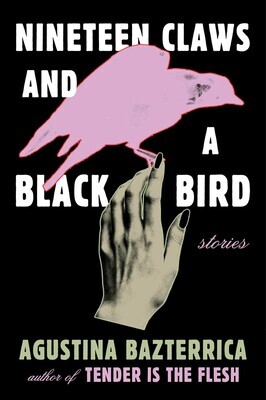
Nineteen Claws and a Black Bird by Agustina Bazterrica, translated from the Spanish by Sarah Moses (Scribner, June 20)
From celebrated author Agustina Bazterrica, this collection of nineteen brutal, darkly funny short stories takes into our deepest fears and through our most disturbing fantasies. Through stories about violence, alienation, and dystopia, Bazterrica’s vision of the human experience emerges in complex, unexpected ways—often unsettling, sometimes thrilling, and always profound. In “Roberto,” a girl claims to have a rabbit between her legs. A woman’s neighbor jumps to his death in “A Light, Swift, and Monstrous Sound,” and in “Candy Pink,” a woman fails to contend with a difficult breakup in five easy steps.

Crooked Plow by Itamar Vieira Junior, translated from the Spanish (Mexico) by Johnny Lorenz (Verso Books, June 27)
Deep in Brazil’s neglected Bahia hinterland, two sisters find an ancient knife beneath their grandmother’s bed and, momentarily mystified by its power, decide to taste its metal. The shuddering violence that follows marks their lives and binds them together forever.
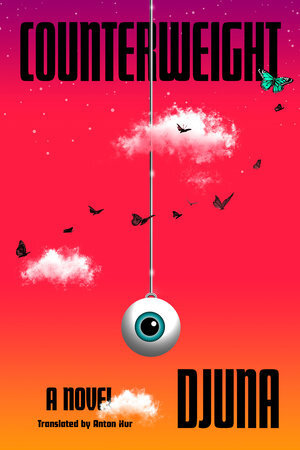
Counterweight by Djuna, translated from the Korean by Anton Hur (Pantheon, July 11)
For fans of the worlds of Philip K. Dick, Squid Game, and Severance: An absorbing tale of corporate intrigue, political unrest, unsolved mysteries, and the havoc wreaked by one company’s monomaniacal endeavor to build the world’s first space elevator—from one of South Korea’s most revered science fiction writers, whose identity remains unknown.
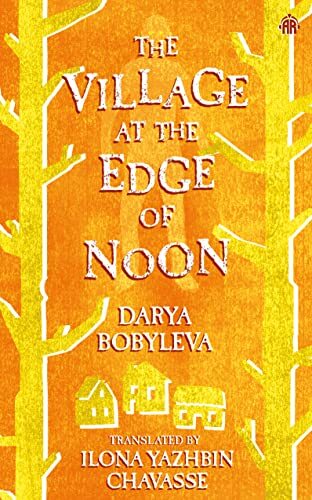
The Village at the Edge of Noon by Darya Bobyleva, translated from the Russian by Ilona Chavasse (Angry Robot, July 25)
Everything you were afraid to find out about the heat of noon and grandma’s old tales comes together in this English language debut of an award-winning and bestselling young Russian writer.

The Forest Brims Over by Maru Ayase, translated from the Japanese by Haydn Trowell (Counterpoint, July 25)
A woman turns herself into a forest after long being co-opted to serve as the subject of her husband’s novels—this surrealist fable challenges traditional gender attitudes and exploitation in the literary world.
AUGUST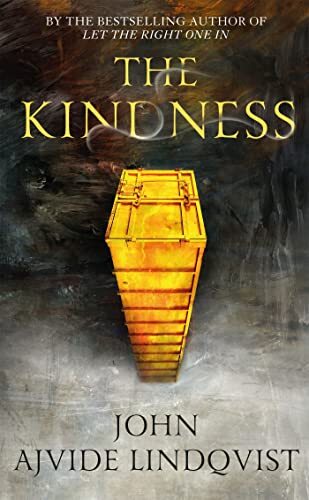
The Kindness by John Ajvide Lindqvist, translated by Marlaine Delargy (riverrun, August 3)
A shipping container is mysteriously dumped in the Swedish port town of Norrtalje. Due to their ignorance of its ownership it isn’t until a week has passed that the authorities can have it forced open. There the remains of twenty eight refugees are found, a situation of unrelenting horror. Not only that; a black sludge pours out which contaminates the river and is the cause of a new, sickening dread that affects Norrtalje’s inhabitants, causing a lack of trust, aggression, violence. It seems like an end to Kindness. Six characters are at the centre of this extraordinary novel, six people in search of love and connection, whose extraordinary qualities will confront the metaphysical illness consuming their town.
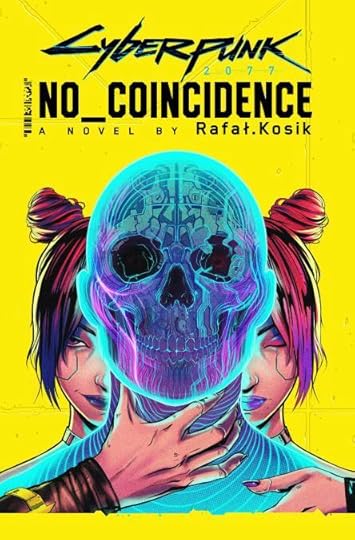
Cyberpunk 2077 by Rafal Kosik, translated from the Polish by Stefan Kielbasiewicz (Orbit, August 8)
Written by acclaimed Polish science fiction writer and screenwriter Rafał Kosik, the electrifying novel follows a group of strangers as they discover that the dangers of Night City are all too real.

Fishing for the Little Pike by Juhani Karila, translated from the Finnish by Lola Rogers (Restless Books, August 15)
Winner of the Jarkko Laine Literature Prize
In the utterly original, genre-defying, English-language debut of Finnish author Juhani Karila, a young woman’s annual pilgrimage to her home in Lapland to catch an elusive pike in three days is complicated by a host of mythical creatures, a murder detective hot on her trail, and a deadly curse hanging over her head.
SEPTEMBER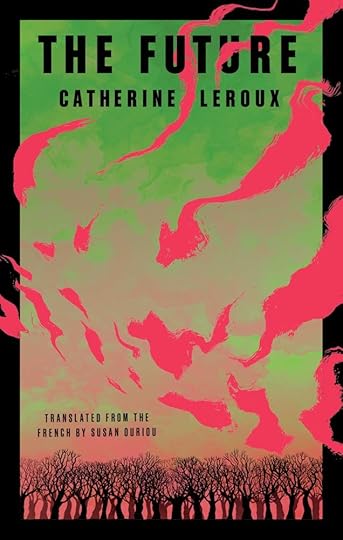
The Future by Catherine Leroux, translated from the French (Quebec) by Susan Ouriou (Biblioasis, September 5)
In an alternate history of Detroit, the Motor City was never surrendered to the US. Its residents deal with pollution, poverty, and the legacy of racism—and strange and magical things are happening: children rule over their own kingdom in the trees and burned houses regenerate themselves. When Gloria arrives looking for answers and her missing granddaughters, at first she finds only a hungry mouse in the derelict home where her daughter was murdered. But the neighbours take pity on her and she turns to their resilience and impressive gardens for sustenance. When a strange intuition sends Gloria into the woods of Parc Rouge, where the city’s orphaned and abandoned children are rumored to have created their own society, she can’t imagine the strength she will find. A richly imagined story of community and a plea for persistence in the face of our uncertain future, The Future is a lyrical testament to the power we hold to protect the people and places we love—together.
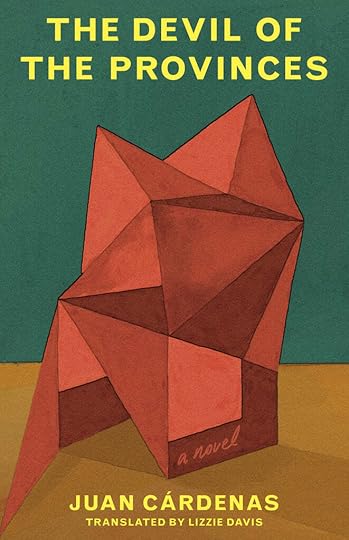
The Devil of the Provinces by Juan Cárdenas, translated from the Spanish by Lizzie Davis (Coffee House Press, September 12)
After a series of failures, a biologist returns to his hometown to live with his grieving mother. But in this gripping crime novel that upends the genre’s conventions, strange events unravel what he thought he knew of his past, his present, and himself.

The Court of Shadows by Victor Dixen, translated from the French by Françoise Bui (Amazon Crossing, September 19)
A fiery heroine seeks vengeance against a royal court of deadly vampires in this epic alternate history set in lavish Versailles.
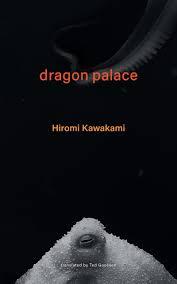
Dragon Palace by Hiromi Kawakami, translated from the Japanese by Ted Goossen (Stone Bridge Press, September 19)
From the bestselling author of Strange Weather in Tokyo comes this otherworldly collection of eight stories, each a masterpiece of transformation, infused with humor, sex, and the universal search for love and beauty—in a world where the laws of time and space, and even species boundaries, don’t apply. Meet a shape-shifting con man, a goddess who uses sex to control her followers, an elderly man possessed by a fox spirit, a woman who falls in love with her 400-year-old ancestor, a kitchen god with three faces in a weasel-infested apartment block, moles who provide underground sanctuary for humans who have lost the will to live, a man nurtured through life by his seven extraordinary sisters, and a woman who is handed from husband to husband until she is finally able to return to the sea.
OCTOBER
Godzilla and Godzilla Raids Again by Shigeru Kayama, translated from the Japanese by Jeffrey Angles (University of Minnesota Press, October 3)
The first English translations of the original novellas about the iconic kaijū Godzilla.

On the Isle of Antioch by Amin Maalouf, translated from the French by Natasha Lehrer (World Editions, October 3)
Alec, a press artist with an impressive track record, settles on a remote island in the Atlantic Ocean. He has little contact with his neighbor, a solitary woman who wrote a cult book years ago, before withdrawing from public life. That is, until a gigantic power failure cuts them off from the rest of the world, and all of a sudden they find themselves dependent on each other. The world appears to be on the brink of nuclear war and the collapse of civilization seems imminent. Just who are the mysterious friends of Empedocles, the gang of otherworldly protectors who came swooping in to interfere with the US presidency and cure all illness? Should we trust them? On the Isle of Antioch is a suspenseful novel with mythological roots, written in the dreamy language of the classics, by internationally renowned scholar Amin Maalouf.
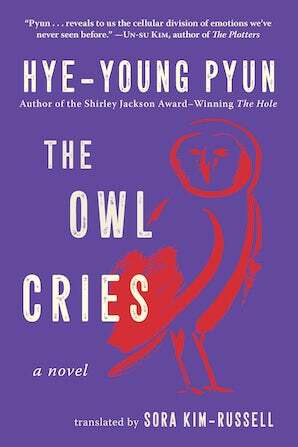
The Owl Cries by Hye-young Pyun, translated from the Korean by Sora Kim-Russell (Skyhorse Publishing, October 3)
A disappearance. A missing brother. A lawyer asking questions. And a vast forest in the mountains—the western woods—where the trees huddle close together emanating a crushing darkness and a chill dampness fills the air. The ranger, In-su Park, who lives nearby with his family, is a recovering alcoholic. He claims no knowledge of the man who disappeared, even though the missing man had worked as the ranger just before him. In the little village down the mountain, the shopkeepers will do the same and deny they ever saw or knew the man, though they’re less convincing; and his former supervisor at the Forestry Research Center, Professor Jin, dismisses his importance. But when an accident and a death derail the investigation and someone attempts to break into his office, In-su Park finds himself conducting his own inquiry into the goings-on deep in the heart of the western woods—spurred by the mysterious words he discovers on a piece of paper beneath his desk: “In the forest the owl cries.”
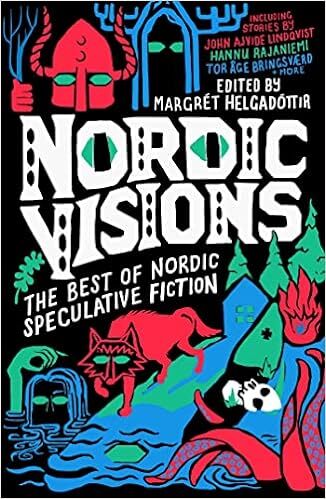
Nordic Visions, ed. Margrét Helgadóttir, various translators (Rebellion Publishing, October 10)
Storytelling has been a major force in the Nordic countries for thousands of years, renowned for its particular sense of dark humour, featuring pacts with nature and a view of the worlds you seldom find in other places. Featuring 16 stories across fantasy, science fiction and horror from the best contemporary speculative authors from Finland, Sweden, Denmark, Norway, Iceland, and The Faroe Islands, many in English for the very first time, Nordic Visions edited by Margrét Helgadóttir is out this October.
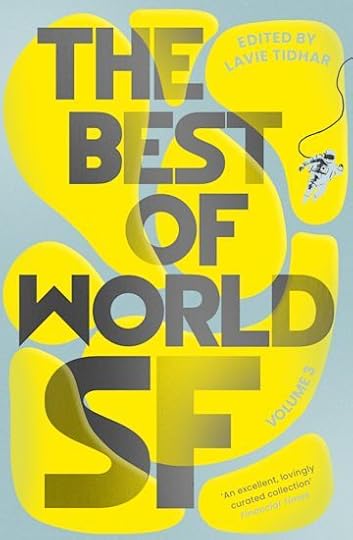
The Best of World SF 3, ed. Lavie Tidhar, various translators (Head of Zeus, October 12)
In this third installment, you’ll discover alien artists, rioting dinosaurs, shape-shifting rabbits, heartbreak-harvesting cafes and one robot on a quest for meaning. You will be transported to the stars and back down to Earth and sideways, with the order of the world turned upside down. Featuring authors from Austria, Bulgaria, China, Finland, Ghana, Greece, India, Korea, Malaysia, Mexico, the Netherlands, Nigeria, Pakistan, Palestine, the Philippines, Portugal, Russia, Singapore and South Africa, this collection’s stories have been selected by award-winning writer, editor and World SF expert Lavie Tidhar.
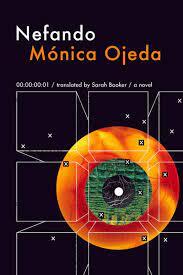
Nefando by Mónica Ojeda, translated from the Spanish (Ecuador) by Sarah Booker (Coffee House Press, October 24)
Six young artists share an apartment in Barcelona: Kiki Ortega, a researcher writing a pornographic novel; Iván Herrera, a writer whose prose reveals a deeply conflicted relationship with his body; three siblings, Irene, Emilio, and Cecilia, who quietly search for ways to transcend their abuse as children; and El Cuco Martínez, a video-game designer whose creations push beneath the substrate of the digital world. All of them are connected in different ways to Nefando, a controversial cult video game whose purpose remains a mystery. In the parallel reality of the game, players found relief from the pain of past trauma and present shame, but also a frighteningly elastic sense of self and ethics. Is Nefando a game for horror enthusiasts, a challenge to players’ morals, or a poetic exercise? What happens in a virtual world that admits every taboo?
NOVEMBER
Kurdistan + 100: Stories from a Future State, edited by Orsola Casagrande and Mustafa Gundogdu (Comma Press, November 2)
Kurdistan + 100 poses a question to contemporary Kurdish writers: Might the Kurds one day have a country to call their own? With 13 stories all set in the year 2046 – exactly a century after the first glimmer of Kurdish independence, the short-lived Republic of Mahabad – this book offers a space for new expressions and new possibilities in the ongoing struggle for self-determination. Featuring stories by: Qadir Agid, Yildiz Cakar, Selahattin Demirtas, Omer Dilsoz, Muharrem Erbey, Nariman Evdike, Ava Homa, Hüseyin Karabey, Karzan Kardozi, Sema Kaygusuz, Meral Simsek, Jahangir Mahmoudveysi, and Jîl Şwanî.
DECEMBER
They Will Dream in the Garden by Gabriela Damián Miravete, translated from the Spanish (Mexico) by Adrian Demopulos (Rosarium Publishing, December 5)
Otherwise Award-winning author, Gabriela Damián Miravete elaborates the disconcerting experience of living as a woman in Mexico—a territory characterized by its great contrasts, from violence and activism to affectionate and communal resistance: flowers that arise from the earth to expand the cosmic consciousness of those who take it, nuns who create artifacts so that their native languages do not perish, a memorial for the victims of femicide that the State controls, but whose old guardian wants to turn into a laboratory to return their lost future…
December 16, 2023
2023 SFT: Year in Review
We’ve gotten so much SFT goodness this year, though not as much in years past, unfortunately. Nonetheless, I’m determined to look on the bright side and consider the fascinating array of languages and themes that have made their way into English, thanks to wonderful authors, translators, editors, and publishers.
The long-form SFT this year has included gothic stories and ghost stories, dystopian hospitals, transformation via nanites, space elevators, sludgy-horror, vampires, and much more. Translated from the Hindi, French, Spanish, Chinese, Italian, Swahili, Catalan, Russian, Japanese, Korean, Indonesian, Portuguese, Polish, Finnish, Norwegian, Kurdish, and Czech, these texts demonstrate just how universal speculative fiction has become. The short-form SFT is equally diverse, with stories translated from languages including German, Lithuanian, Portuguese, and Dutch.
Here are some illustrative pie charts on which you may feast your eyeballs:
SHORT-FORM (short stories in magazines/online publications)


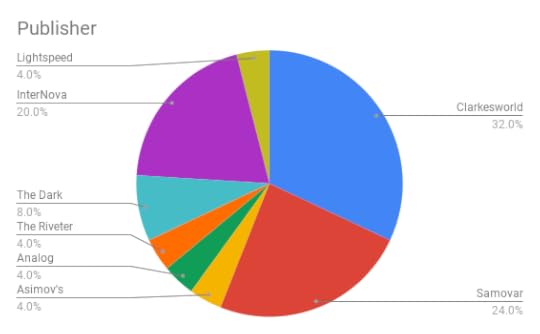
*
LONG-FORM (novels, collections, anthologies)


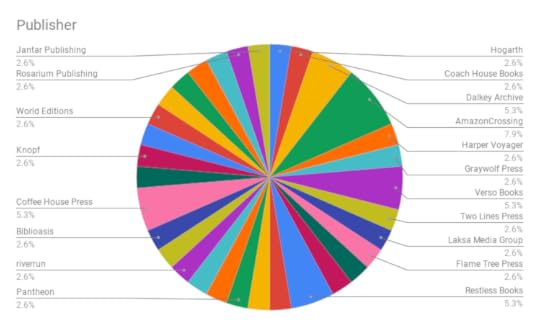
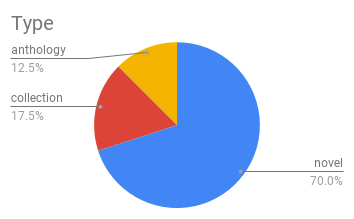
December 7, 2023
Review: Sky City: New Science Fiction Stories by Danish Authors

edited by Carl-Eddy Skovgaard
Afterword by Niels Dalgaard
Science Fiction Cirklen, 2010
242 pages
grab a copy here
Sky City is a hidden gem. With stories drawn from the first two “best of the best” science fiction anthologies published by Science Fiction Cirklen (the Danish science fiction fan association) in 2007 and 2008, this SFT anthology offers Anglophone readers a window onto a fascinating writing scene. Though Denmark is a relatively small country without a lot of cultural reach in the US, its speculative fiction, developed over decades and influenced by its own literary traditions and Western science fiction, is vibrant and varied.
Here you’ll find stories about AI, biotechnology run amok, alien intelligences, dystopian nightmares, space travel, and much more, set in places like Tokyo, Shanghai, the moon Europa, the US, Denmark, and elsewhere). Some of the most haunting (and my favorites) involve characters who feel trapped, either in their hotel, city, or planet, and are trying to find a way out to a better life. Several of the authors translated their own stories for this anthology, while other stories were translated by fellow authors who appear here (i.e. Richard Ipsen, who wrote “The White Bear,” translated Søren Elmerdahl Hemmingsen’s “A Contribution to the History of Denmark”).
The only place I could find a copy of Sky City from my position in the US was on Abe Books for a not insignificant price. It was worth the money, though, given the quality of the stories and their translations. I urge you to borrow or buy Sky City if you’re interested in further understanding the intriguing scope of speculative fiction as it is written around the world and in underrepresented languages.
Below are synopses of each story. Enjoy! And yes, there are spoilers.
The following stories appeared in the first annual anthology (by Science Fiction Cirklen) of the best Danish original science fiction stories, Lige under overfladen (Just Below the Surface) (2007)
*
“Sky City” by Manfred Christiansen, tr by the author
An AI has been ordered to build a large structure but was never told when to stop, so it kept building with nano-bots until the structure reached out into space and threatened to collapse in on itself. A human woman has to tell the AI that its job is done.
*
“Departure” by Niels Gjerløff, tr by the author
Two scientists journey to Jupiter’s moon Europa, only for the reader to find out at the very end of the story that they have been genetically altered to have enlarged feet and hands, as well as gills, so that they can breathe under water.
*
“The White Bear” by Richard Ipsen, tr by the author
Set at some point in the future, two men are sent out by a shadowy boss to kidnap young girls to sell as wives to men living in major Chinese cities. One man decides to give up this “work” after a disastrous job and attempts to set things right.
*
“Helium Loves Company” by Glen Stihmøe, tr by Niels Dalgaard
One of my favorites of the anthology. “Helium” reads like a dystopian take on The Wizard of Oz, with a ragtag group of humans and biologically altered creatures on a quest for a better life. Here, biotechnology has contaminated the outside world and eaten away at almost everything. A group of survivors follow one of their number, named “Helium,” as she searches for whatever is telepathically calling to her. Eventually they encounter what at first seems like an oasis but is likely more sinister.
*
“The Last Astronaut” by Flemming R. P. Rasch, tr by Daniel Logan Berg-Munch
In this brief story, a succession of human and robot astronauts land on a barren planet, bringing updated knowledge about the end of humanity.
*
“The Organism on Maneo” by Morten Brunbjerg, tr by Niels Dalgaard
An alien brought onto a large generation ship (?) is found to transmit data through touch. When it touches one of the humans on board, the flow of data is too much for her to absorb.
*
“The Tourist” by Patrick Leis, tr by Michael Pilgaard
An interrogation expert learns that the member of the Air Force who have the order to blow up a mysterious sphere in a rural area of the US is actually a time-tourist from the future.
*
“Know Your Target Audience” by Dan Mygind, tr by the author
A man trying to expose the truth about the Danish government encouraging a terrorist attack is killed after he tells a powerful new station executive about it.
*
“The Red Parakeets” by Camilla Wandahl, tr by Lars Ahn Pedersen
A fad for turning everything red becomes a forced procedure on humans. One woman who resists this eventually finds out that there are others like her fighting back against the fad. When she tries to join and save someone from the needle, she is violently stopped.
The following stories appeared in the second anthology, I overfladen (In the Surface)
“The Short Arm of History” by Kenneth Krabat, tr by Niels Dalgaard
One of the best stories in the anthology. Here, humans find a series of portals deep underground and, despite not knowing where they are taking them, line up by the hundreds of thousands. One man tries to figure out ways to help people know where they’re going based on other returnees’ experiences.
“A Contribution to the History of Denmark” by Søren Elmerdahl Hemmingsen, tr by Richard Ipsen
An interesting spin on the giant-creature-attacks-city story. A recently-discovered giant ancient reptile has accidentally been regenerated in Copenhagen and goes on a destructive rampage, but that’s just background for what happens next. Those who survived the destruction begin using the event to call for and then implement repressive measures against one another.
“When the Music’s Over” by A. Silvestri, tr by Leah Thume
This is my absolute favorite of the collection. A giant alien spaceship just plops down in the middle of New York’s Central Park and sits there doing nothing for years. Then a series of unexpected incidents occur: music starts blaring out from the ship, another ship lands on and crushes the first ship and someone who looks like Darth Vader steps out, and then other ships land in different cities around the world, spewing out cheap junk at the bewildered populace (literally magazines, posters, prints of famous paintings, etc.). A group of musicians is tasked to make contact with the alien intelligence, and they are told that human media has been providing entertainment to this otherworldly species for many years. But when the aliens tried to use this media to create their own unique forms, they were unable to. Thus, as one alien tells the musicians’ spokesperson: “We propose this: You give us 25 new episodes of Star Trek and in return we give you the recipe for how to extend your lifespan by 50 years. But we insist on it being The Next Generation, we never really liked Captain Kirk.” As one musician notes to the spokesperson, “Raoul, they’ll give us the solutions to many of the great mysteries for the price of the remake of a few old series and remixes of old commercial jingles.” This bargain, while it seems great at first, becomes a depressing trap.
“E-Puzzle” by Nikolaj Højberg, tr by Bente Bernhard Riis
A man who developed a digital “afterlife” program to give the dead a kind of heavenly paradise uses his son’s self-destructive traits (after that son meets a violent end) to perfect the program.
“Leading, Feeding” by Ellen Miriam Pedersen, tr by the author
A crew on a spaceship is dissecting an alien they picked up from a passing capsule when something blows the humans’ ship apart, leaving only the captain alive.
“You are My Best Friend” by Camilla Fønss Bach Friis, tr by Dan Mygind
A woman goes out on the town with her new best friend, who happens to be a very life-like android. Despite this new friend, the woman is still lonely and thinks about suicide. When she whispers something about jumping in front of a coming train, her friend takes it literally and nearly pulls the human woman under the train with her.
“Dreams of Stone” by Brian P. Ørnbøl, tr by Michael Pilgaard
A lonely woman feeling trapped by the gray dullness of the City tries to escape it to a more rural area. And yet, no matter how far she goes, she can’t seem to find her way out of it, and everyone she asks looks at her strangely. She finally does find what she’s looking for, only to realize that construction crews are already turning what’s left of the natural world into more concrete and metal.
“The Green Jacket” by Gudrun Østergaard, tr by the author
This story made me think of the 2023 tv show Silo, since it is set in a tower structure with so many different levels that people can live in one section without having ever visited lower or higher sections. One disgruntled teenager, tired of living in a world of elite conformity and sameness, ventures down several levels to the poorer, grittier section of the tower. Her encounters down there lead her to flee back to her home on the upper levels, though her disappointment at not finding what she was looking for is great.
“In the Surface” by Sara Tanderup, tr by Lea Thume
On an Earth where many species have died and the oceans have taken over, a group of mermaid-like creatures have evolved. One even figures out how to fly for small amounts of time.
“Interrogation of Victim no.5” by Lars Ahn Pedersen, tr by the author
A stabbing victim wakes up in a hospital/lab and is asked a series of questions about her attacker. Eventually she figures out that she is dead and is speaking to an AI only because her biochip is still functioning. That biochip, though, cannot be used to bring her fully back to life.
December 3, 2023
Out This Month: December
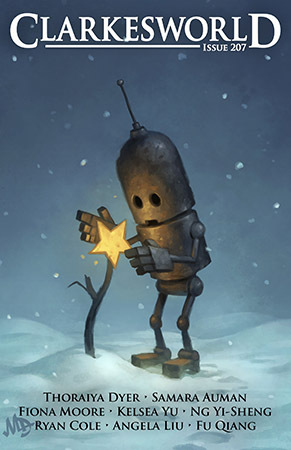 “Kill That Groundhog” by Fu Qiang, translated from the Chinese by Andy Dudak (Clarkesworld, December 1)
“Kill That Groundhog” by Fu Qiang, translated from the Chinese by Andy Dudak (Clarkesworld, December 1)
They Will Dream in the Garden by Gabriela Damián Miravete, translated from the Spanish (Mexico) by Adrian Demopulos (Rosarium Publishing, December 5)
Otherwise Award-winning author, Gabriela Damián Miravete elaborates the disconcerting experience of living as a woman in Mexico—a territory characterized by its great contrasts, from violence and activism to affectionate and communal resistance: flowers that arise from the earth to expand the cosmic consciousness of those who take it, nuns who create artifacts so that their native languages do not perish, a memorial for the victims of femicide that the State controls, but whose old guardian wants to turn into a laboratory to return their lost future…
November 27, 2023
Review: I Remember You by Yrsa Sigurðardóttir

translated by Philip Roughton
original publication (in Icelandic): 2012
first English edition: 2012, Minotaur Books
grab a copy here or through your local independent bookstore or library
Winner of the Icelandic Crime Fiction Award, I Remember You: A Ghost Story is a carefully-plotted, patient novel. Sigurðardóttir slowly unspools the clues to questions about deaths and disappearances throughout the story until, by the end, you’ll find yourself speed-reading to learn the answers.
Skillfully translated from the Icelandic by Philip Roughton, I Remember You switches between telling the story of a psychiatrist and doctor named Freyr (living in the town of Isafjördur), and that of three friends (Garðar and Katrín, who are married, and Líf) who have moved to the deserted village of Hesteyri to renovate a house and run it as a bed-and-breakfast. Freyr has been called on by a detective named Dagný to help with an investigation into an act of vandalism. A primary school has been ransacked and the word “dirty” scrawled across a wall. Weirdly enough, no one can figure out how the vandal actually entered the building. Freyr has his own problems, trying to move forward with his life after the mysterious disappearance of his young son three years before and his wife’s subsequent emotional collapse.
Meanwhile, Garðar and Katrín have sunk the rest of their meager savings into renovating a house that Garðar’s best friend Einar (Líf’s husband) had first wanted to fix up, before his untimely death. Dropped off on the shore of the lonely, abandoned village with some provisions and very little renovation knowledge, Garðar, Katrín and Líf (with a dog named Putti) attempt to make their home in the creepy building in the middle of winter while they rip up rotted wood and repaint the walls. Putti, I must say, plays a significant role in the story and is just as much of a well-rounded character as his unfortunate house-mates.
Ever so slowly, the two stories begin to converge. Not long after moving into the house, the three friends start seeing glimpses of what appears to be a child, and soon they start hearing him whispering and giggling. Back in Isafjördur, Freyr and Dagný begin to learn the story of Bernodus, a bullied and abused boy whose own strange disappearance several decades before mirrors that of Freyr’s own son, Benni. Around the time of Bernodus’s disappearance, there had also been an incident of vandalism at a primary school, with the faces of certain children in the school photo scratched out. When Freyr and Dagný find that only one of those people is still living (the others died strange deaths), they start connecting the disappearances of the two boys and eventually link them to Hesteyri.
Sigurðardóttir skillfully manages the alternating chapters, leaving us wanting more at the end of each one and then having to wait until the narrative thread picks back up. The creepiness of the abandoned village is thoroughly explored, but could have been ratcheted up a bit faster. The ending, which unfolds as expected, leaves too much unexplained. Okay, yes, I know it’s a ghost story, and Sigurðardóttir is building on the idea that angry, unavenged ghosts hang around haunting people until things are set right and they can finally go where ghosts eventually go. But is there something particularly special about Hesteyri that it is the site of all of these ghosts (because there’s another one at the end!) and child disappearances? That would have been an interesting exploration. Overall, though, I Remember You is the kind of book that draws you in quickly and makes you want to ignore everything else until you finish it.
November 25, 2023
Out This Month: November
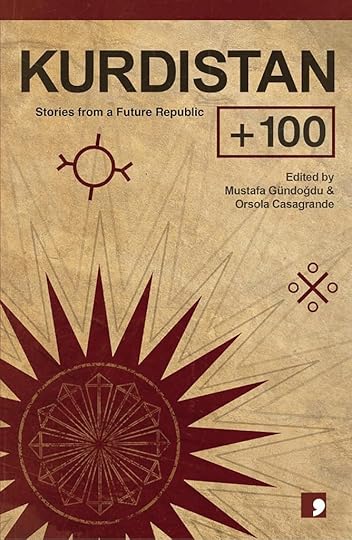
Kurdistan + 100: Stories from a Future State, edited by Orsola Casagrande and Mustafa Gundogdu (Comma Press, November 2)
Kurdistan + 100 poses a question to contemporary Kurdish writers: Might the Kurds one day have a country to call their own? With 13 stories all set in the year 2046 – exactly a century after the first glimmer of Kurdish independence, the short-lived Republic of Mahabad – this book offers a space for new expressions and new possibilities in the ongoing struggle for self-determination.
Featuring stories by: Qadir Agid, Yildiz Cakar, Selahattin Demirtas, Omer Dilsoz, Muharrem Erbey, Nariman Evdike, Ava Homa, Hüseyin Karabey, Karzan Kardozi, Sema Kaygusuz, Meral Simsek, Jahangir Mahmoudveysi, and Jîl Şwanî
REVIEWS
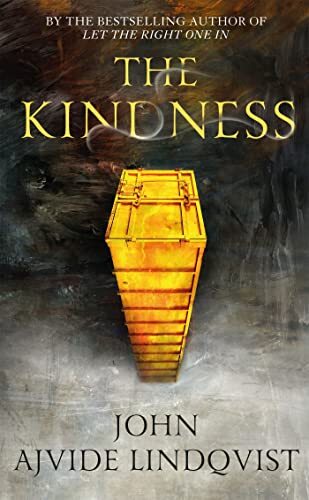
reviewed by Rachel Cordasco, Strange Horizons
